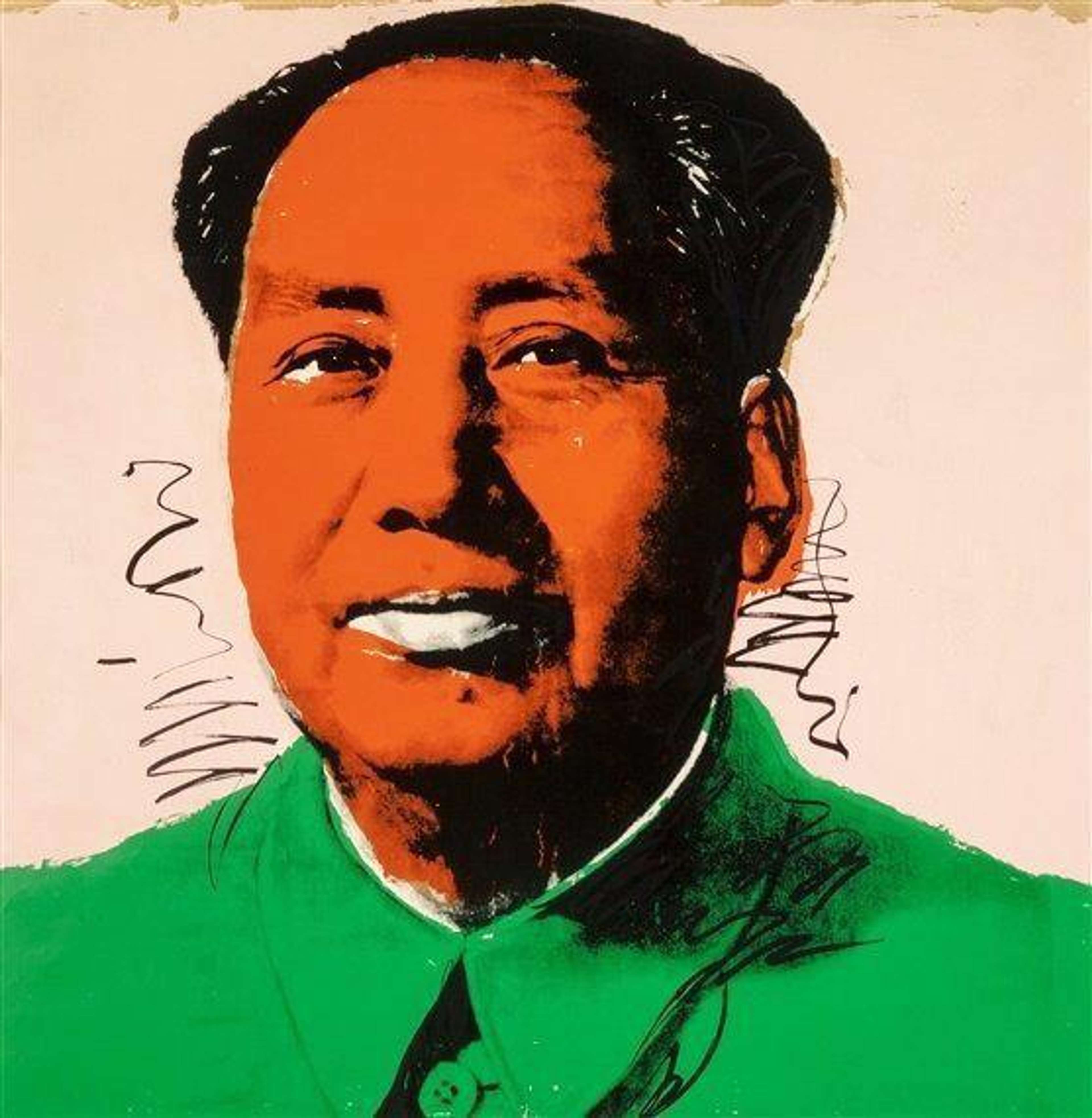
Mao (F. & S. II.94)

Mao (F. & S. II.94)
Signed Print
Andy Warhol
£30,000-£45,000
$60,000-$90,000 Value Indicator
$60,000-$80,000 Value Indicator
¥280,000-¥420,000 Value Indicator
€35,000-€50,000 Value Indicator
$310,000-$460,000 Value Indicator
¥6,170,000-¥9,250,000 Value Indicator
$40,000-$60,000 Value Indicator
There aren't enough data points on this work for a comprehensive result. Please speak to a specialist by making an enquiry.
89 x 89cm, Edition of 250, Screenprint
Auction Results

Track auction value trend
Meaning & Analysis
Taken from his renowned Mao series from 1972, Mao (F. & S. II.94) is a print by Andy Warhol that features a striking portrait of the Chinese communist leader Chairman Mao Zedong. The print contrasts orange hues in Mao’s face and green tunic against a pink background. The colours seep into his eyes and Warhol has deliberately created imperfections with the ink.
Warhol’s use of colour in this Mao print works within the aesthetic of Western kitsch and alludes to the appearance of makeup on Mao’s face. Light pink is added to enhance the lips of the statesman and his darkly coloured mole is reminiscent of Marylin Monroe’s beauty mark. In the suggestion of makeup and use of fluorescent colours, Warhol makes a statement on the false veneer that the original propaganda image attempts to portray and at the same time revitalises Chairman Mao as an unlikely Pop icon to be distributed as an image in the mass-media.
Relying on his typical method of screen printing with the aim of mass-production, Warhol reflects the wide distribution of Mao’s image in communist China whilst also comparing this to the obsessive production of mass-media images in capitalist America. The result is a humorous social commentary on these opposing systems of power during the political tensions of the Cold War.